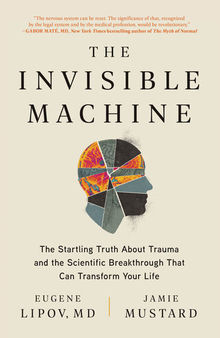 جزییات کتاب
جزییات کتاب
The world has long misunderstood trauma. Now, leading experts in the field have a radical new understanding of post-traumatic stress . . . and a surprising new treatment to reverse it could have profound implications for medicine, mental health, and society at large. Despite its prevalence, post-traumatic stress, PTSD, is often seen as an unbeatable lifelong mental disorder. Leading trauma doctors and neuroscientists now understand that the result of trauma is not a disorder, but rather a physical injury to the body—invisible but tangible, and most importantly, treatable. Meet Dr. Eugene Lipov. His research and partnerships have led to an amazing discovery that all trauma has at its root a single piece of human hardware: the stellate ganglion. The symptoms of post-traumatic stress are the same for all of us, whether from childhood poverty or abandonment, the ravages of war, or the brutality of sexual assault. Dr. Lipov’s pioneering procedure appears to treat injury to the stellate ganglion, relieving even the worst symptoms of PTSD—irritability, hypervigilance, insomnia, and more—in a 15-minute treatment. Weaving hard science with moving human stories, The Invisible Machine reveals how this treatment was developed. It also tells the incredible story of the unlikely team, including the doctor, an artist, Special Forces leadership, and a sheriff, who are working together to change our understanding of post-traumatic stress and why it matters to society. Written in collaboration with Holly Lorincz and featuring stories of warriors, prisoners, abuse survivors, and the average citizen, The Invisible Machine reveals a stark new understanding of human pain. The implications for a better, pain-free world are astounding—and that world could be nearer than we think.



 دانلود کتاب
دانلود کتاب

 جزییات کتاب
جزییات کتاب



 این کتاب رو مطالعه کردید؟ نظر شما چیست؟
این کتاب رو مطالعه کردید؟ نظر شما چیست؟
